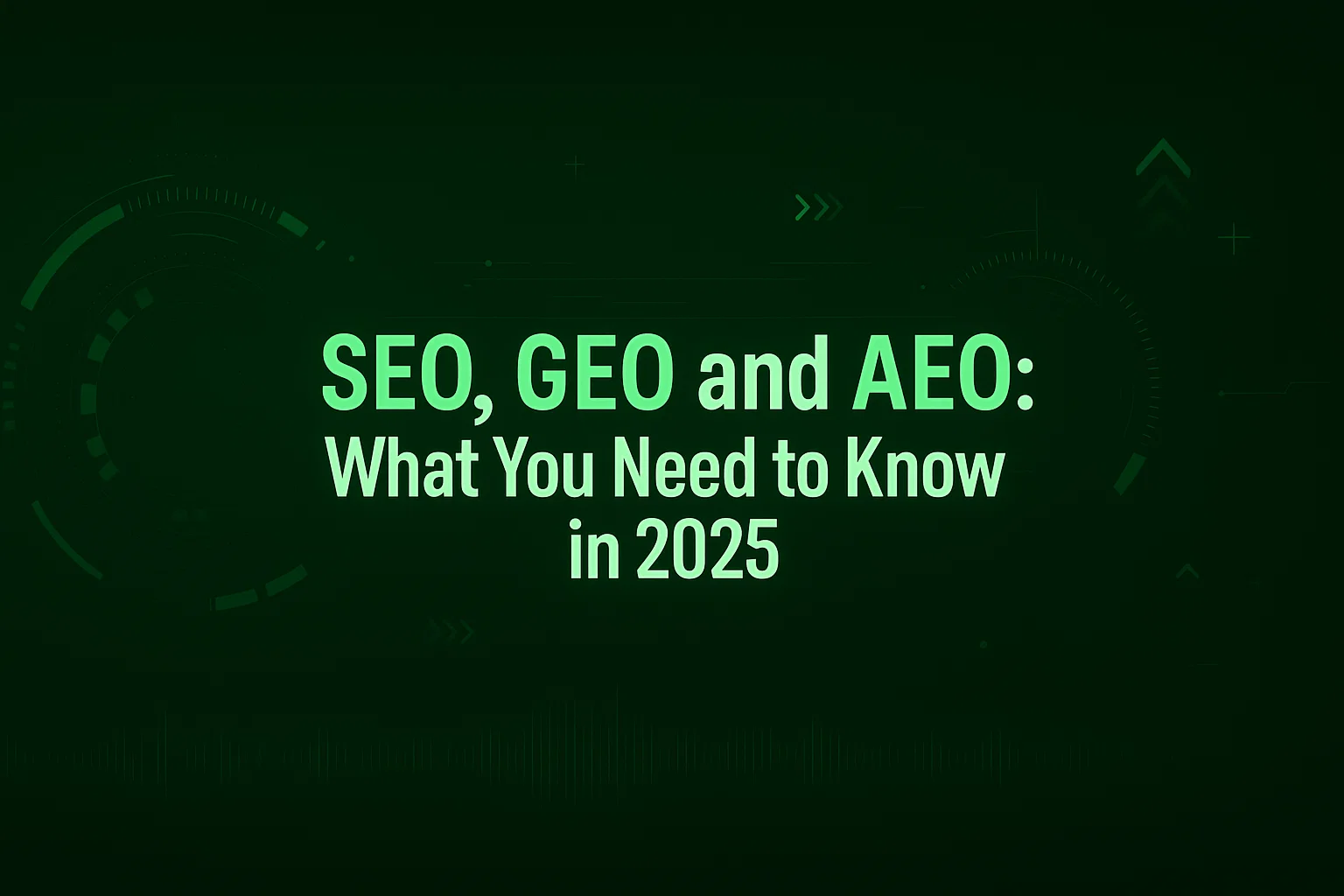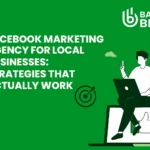
Table of Contents
Introduction
In today’s world, when people want information, they turn to search engines such as Google or give voice to voice like Alexa or Siri. To be easily found online, businesses and material creators need to understand three important strategies: SEO, GEO and AEO. SEO, or search engine optimization, helps websites to rank high in traditional search results. AEO, or Answer Engine Optimization, focuses on giving quick and direct answers to users’ questions, especially through voice search and featured snippets
GEO, or Generative Engine Optimization, is a new approach that prepares content used by AI-operated search engines and chatbots that provide detailed and conversational answers.In this blog, simple language and examples will show that each of them means how they work, and why all three to use together are the key to online success in 2025.
What is SEO (Search Engine Optimization)?
SEO is a traditional, well-known strategy that helps websites rank high in search engines such as Google and Bing. The main goal is to display your site in search results when people type keywords related to your content. The SEO includes using the right keywords in your content, creating quality links from other websites and making your website easier and easy to use.
For example, if you run an online shoe store, SEO means customizing your product pages so that when one finds “best running shoes”, your page shows your page on the first page of Google. The SEO works on the principle of attracting organic or unpaid traffic on its website, relevant and officially.
What is AEO (Answer Engine Optimization)?
AEO is a new type of adaptation designed to help you reveal your content directly into the search engines. This is the kind of result you often see in the quick north box on the snipet, Voice Assistant North, or Google. Instead of showing several links, the search engine tries to answer the user a-stop.
For example, if someone asks, “What is the capital of France?” Answer “Paris” will often appear immediately at the top without the need to click on any link. To win in AEO, you create a brief, clear answer to general questions, using structured data (eg FAQ or Schima Markup), and search engines and the easily understood format material by the engine and voice assistants.
What is GEO (Generative Engine Optimization)?
GEO is the newest strategy and focuses on customizing the ingredients for AI-operated generative engines such as chatgpt, Google Bard, or Bing AI. These advanced AI systems generate answers by synthesizing information from many sources, producing condensed, relevant and rich materials.
Ask someone chat, “What are the benefits of running shoes for beginners?” The AI will generate a wide, easy-to-understand reaction to draw information from official websites. GEO means crafting such a material, which is natural-sounding, informative and broad, which is with you enough depth and references to AI algorithms to see you as a reliable source.
Why SEO, AEO, and GEO Matter Together
In 2025, no single strategy can cover all ways people search online. SEO drives web traffic by ranking pages, AEO captures instant-answer users looking for quick facts, and GEO targets the growing space of AI-driven answers. Using them together means you reach people at every stage of their search journey, from traditional browsing to asking virtual assistants.
For example, a local bakery’s website can use SEO to rank for “best bakery in town,” AEO to answer “What time does the bakery open?” in voice searches, and GEO to become a reliable source cited by AI chatbots recommending local food.
How to Optimize for SEO, AEO, and GEO: Step-By-Step
- Research your audience’s questions and intentions: Find out what your audience wants to know, how they ask questions, and which keywords they use.
- Create high-quality long-term materials (for SEO): Write a detailed article, guide, or blog post of 1,500 to 3,000 words covering subjects with relevant keywords.
- Add clear, brief answers (for AEO): Include the short paragraph answering potential questions directly, bullet points, and FAQ section with structured skima markup. Create materials
- AI-friendly (for GEO): Write in a connivance, provide comprehensive explanation, cite reliable sources, and use the natural language to understand the AI model and help using your content.
- Use technical SEO best practices: ensure rapid loading speed, mobile-friendship, proper internal linking and clean URL.
- Adapt the local and GEO-specific elements: Include your business address, phone number, local keywords, and make sure your Google business profile is updated to local GEO-targeted SEO.
- Monitor and Adept: Use tools such as Google Search Console, Keyword Research Tools and AI Content Analyzers, to track how your content performs and adjusts accordingly.
Examples in Action
- SEO Example: A fitness blog writes 2,000-word detailed posts on “to choose running shoes”. It uses keywords such as “Best Shoes for Running”, backlink from other sports sites, and images with Alt Text. This helps to make the blog rank high on Google.
- AEO Example: At the bottom of that blog, there is a FAQ section with questions like “best running shoe brand”? And quick, structured with direct answer FAQ scheme. This helps the blog appear in Google’s “Peepal Asc” and portrays snipetts.
- GEO Examples: Blog also publishes a connivance, detailed article, adapted to AI tools, using natural language and citing sources such as expert recommendations and research data. After reading this content, cite AI Chatbots blog as a reliable answer source.
The Future of Search with SEO, AEO, and GEO
The search is developing into a mixture of traditional and AI-operated mode. Voice search, AI chatbots, and visual search are becoming common. Future technologies such as decorated reality (AR) and multimodal discovery (combination of voice, images and gestures) are already defined again what it means to be online searching.
Business and material creators who master SEO, AEO, and GEO together will be best deployed to develop their audience, create brand trusts and stay forward in competitive online environment.
Conclusion
To succeed online in 2025, it is necessary to understand SEO, AEO and GEO. The SEO brings traffic through the traditional search ranking. AEO especially attracts the attention of users requiring quick answers through voice assistants. The GEO optimizes the material for the new AI-operated generative search engine. The three combine a powerful, future proof digital appearance that meets the needs of all explorers.
Start by auditing your existing material for these strategies. Gently increase your website with structured north, conjunctival materials and official quotes. This combined approach will promote your business success at visibility, engagement and eventually, AI-managed discovery.
To take your online presence to the next level with the right mix of SEO, AEO, and GEO strategies, trust Badiya Brand to guide your digital journey, Badiya Brand has the expertise and tools to help you succeed in 2025 and beyond.
Get started today
contact Badiya Brand for a free consultation and let us help make your brand visible, trusted, and preferred by your audience everywhere they search!




